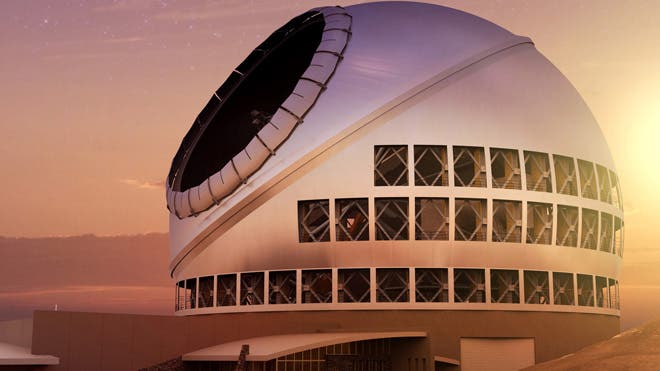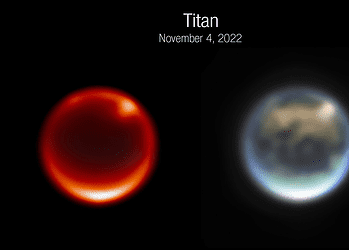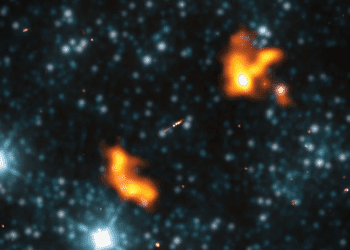
l
After much heated discussions, Hawaiian officials have granted a permit which will finally allow the highly anticipated Thirty Meter Telescope (TMT) to be built on the site of the Mauna Kea summit. Once completed it will stand as the largest optical telescope in the world, allowing astronomers to achieve things they’ve only dreamed about in the past like peering straight through the guts of the early Universe. Imagine retrieving optical images of events that happened 13 billion years ago? Simply amazing.
Work on the telescope should start as early as April 2014, which will be positioned alongside 13 other telescopes currently operational atop the 4,200-metre-high summit, making it one of the most popular telescope destinations, alongside the mountain tops of Chile. The biggest optical telescopes currently atop Mauna Kea are the twin 10-metre Keck telescopes, but the TMT will stand supreme in all respects once it will be completed. The massive telescope will be equipped with a behemoth, 492-segment mirror which when finished will measure 30 meters in length or nine times the collecting area of the largest optical telescopes in use today.
The project, however, wasn’t without obstacles and actually came near to becoming rejected. The site on which the telescope will be built is allegedly home to ancient burial sites, and the Mauna Kea summit itself was once reserved to high chiefs and priests only. Some local environmental groups saw the TMT project as yet another sacrilege brought upon these sacred lands and petitioned against it. The Board of Land and Natural Resources eventually gave cause to the astronomical instrument, but not before specific conditions will be met, nearly two dozen in number, including concessions such as hiring a cultural specialist, and having construction workers receive mandatory ‘sense of place’ training.
The University of California system, the California Institute of Technology and the Association of Canadian Universities for Research in Astronomy are spearheading the telescope. China, India and Japan have signed on to be partners. Construction will cost $1 billion to complete.
Once raised, however, the TMT might not reign king for too long. Also slated is the European Southern Observatory’s own telescope on the same scale, the 39-metre Extremely Large Telescope, which will be built in Chile. Currently, the project is still in its fund raising stage but with the United Kingdom being confirmed last month as a contributing member, bringing the total to 11 member states who are on board, it won’t take too long for it to garner its necessary resources. Expect exciting times to follow once these giant telescopes become operational.






